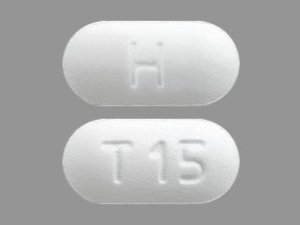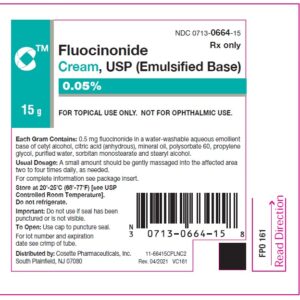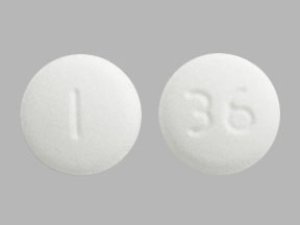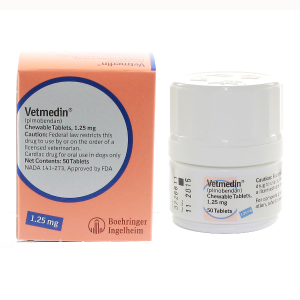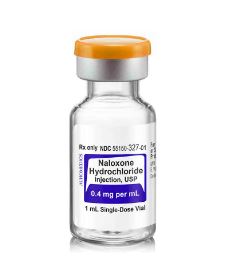Delivery Method: VIA UPS Reference #: 320-26-09 Product: Drugs
Over-the-Counter Drugs Recipient:
Recipient Name
Mr. Fabian McCarthy
DermaRite Industries, LLC
7777 West Side Avenue
North Bergen, NJ 07047
United States
Issuing Office: Center for Drug Evaluation and Research (CDER)
United States
Warning Letter 320-26-09
October 27, 2025
Dear Mr. McCarthy:
The United States Food and Drug Administration (FDA) inspected your drug manufacturing facility, DermaRite Industries, LLC, FEI 1000526900, at 7777 West Side Avenue, North Bergen, from March 26 to April 8, 2025.
This warning letter summarizes significant violations of Current Good Manufacturing Practice (CGMP) regulations for finished pharmaceuticals. See Title 21 Code of Federal Regulations (CFR), parts 210 and 211 (21 CFR parts 210 and 211).
Because your methods, facilities, or controls for manufacturing, processing, packing, or holding do not conform to CGMP, your drug products are adulterated within the meaning of section 501(a)(2)(B) of the Federal Food, Drug, and Cosmetic Act (FD&C Act), 21 U.S.C. 351(a)(2)(B).
In addition, DermaSeptin OINTMENT SKIN PROTECTANT with COOLING MENTHOL, Lantiseptic Moisture Shield ORIGINALSKIN PROTECTANT, DermaMed OINTMENT SKIN PROTECTANT, DermaFungal ANTIFUNGAL CREAM with 2% MICONAZOLE NITRATE, and PeriGiene HEALTH CARE ANTISEPTIC are unapproved new drugs introduced or delivered for introduction into interstate commerce in violation of sections 505(a) and 301(d) of the Federal Food, Drug, and Cosmetic Act (FD&C Act), 21 U.S.C. 355(a) and 331(d). In addition, DermaMed OINTMENT SKIN PROTECTANT is misbranded under section 502(f)(1) of the FD&C Act, 21 U.S.C. 352(f)(1). Furthermore, DermaSeptin OINTMENT SKIN PROTECTANT with COOLING MENTHOL, Lantiseptic Moisture Shield ORIGINALSKIN PROTECTANT, DermaMed OINTMENT SKIN PROTECTANT, DermaFungal ANTIFUNGAL CREAM with 2% MICONAZOLE NITRATE, and PeriGiene HEALTH CARE ANTISEPTIC are misbranded under section 502(ee) of the FD&C Act, 21 U.S.C. 352(ee). These violations are described in more detail below.
We reviewed your April 28, 2025 response to our Form FDA 483 in detail and acknowledge receipt of your subsequent correspondence.
CGMP Violations
During our inspection, our investigator observed specific violations including, but not limited to, the following.
1. Your firm failed to thoroughly investigate any unexplained discrepancy or failure of a batch or any of its components to meet any of its specifications, whether or not the batch has already been distributed (21 CFR 211.192)
Your firm manufactures over-the-counter (OTC) topical drug products for skin and wound care. Your firm failed to adequately investigate several out-of-limit (OOL) and out-of-specification (OOS) laboratory results, as well as unexplained discrepancies. For example, you failed to identify the root cause for the following:
- Concerning the initial failing test result for total aerobic microbial count (TAMC) of DermaKleen Lot 40375A, which showed too numerous to count, you failed to scientifically identify the root cause of the contamination. Instead of performing an investigation into the root cause of the failure, you sent a second sample to your third-party contract laboratory, obtained passing results, and subsequently released the drug product batch for distribution. This strategy of using repeated testing until a passing result is obtained, then disregarding the OOS results without scientific justification (“testing into compliance”) is unscientific and objectionable under CGMP.
- Concerning the initial OOS test result for the assay of the active ingredient chloroxylenol in DermaKleen Lot 9-40545, you failed to scientifically identify the root cause of the OOS. Instead of performing an investigation into the root cause of the failure, you sent a second sample to your contract laboratory. Despite this retest also producing failing results, your firm released the batch for distribution. It is noteworthy that the certificate of analysis did not reflect the actual results.
You did not thoroughly investigate these unexplained discrepancies or identify failures of a drug product to meet any of its specifications. When an investigation was performed, it was inadequate because you failed to identify the root cause(s), to implement appropriate corrective action and preventive action (CAPA), and to expand the investigation to evaluate the impact on other batches or products.
In your response, you indicated that you would perform a retrospective review of all OOS test results from the last two years and determine their impact on product on the market. Your response is inadequate. You did not commit to evaluating your process for investigating unexplained discrepancies or failures of batches to determine a root cause so that you could implement appropriate CAPA. Inadequate investigations can lead to unidentified root causes, ineffective CAPA, and recurring problems that compromise the ability to manufacture safe and effective drug products.
We acknowledge that you initiated a voluntary recall (https://www.fda.gov/safety/recalls-market-withdrawals-safety-alerts/dermarite-industries-issues-voluntary-nationwide-recall-dermakleen-dermasarra-kleenfoam-and) on July 17, 2025, for products that initially failed for TAMC and those retains that failed for Burkholderia cepacia. On August 27, 2025, you expanded the voluntary recall to include all lots of all products that contain water (https://www.fda.gov/safety/recalls-market-withdrawals-safety-alerts/dermarite-industries-expands-voluntary-nationwide-recall-due-potential-burkholderia-cepacia).
Microbial contamination may not be a uniformly distributed contamination. A product sample may not be representative of the type or level of contamination within the batch. Further, testing final product for microbial contamination does not ensure that you have appropriate controls in place to ensure product quality. As a manufacturer, you have a responsibility to fully investigate unexplained discrepancies, deviations, and failures to assess their impact on product quality.
In response to this letter, provide:
- A retrospective, independent review of all invalidated OOS/OOL (including in-process and release/stability testing) results for U.S. products currently in the U.S. market and within expiry as of the date of this letter, and a report summarizing the findings of the analysis, including the following for each OOS/OOL:
o Determine whether the scientific justification and evidence relating to the invalidated OOS/OOL result conclusively or inconclusively demonstrate causative laboratory error.
o For investigations that conclusively establish laboratory root cause, provide rationale, and ensure that all other laboratory methods vulnerable to the same or similar root cause are identified for remediation.
o For all OOS/OOL results found by the retrospective review to have an inconclusive or no root cause identified in the laboratory, include a thorough review of production (e.g., batch manufacturing records, adequacy of the manufacturing steps, suitability of equipment/facilities, variability of raw materials, process capability, deviation history, complaint history, batch failure history). Provide a summary of potential manufacturing root causes for each investigation and include any manufacturing operation improvements. - A comprehensive review and remediation plan for your OOS/OOL result investigation systems. The CAPA should include but not be limited to the following:
o Quality Unit (QU) oversight of laboratory investigations
o Identification of adverse laboratory control trends
o Resolution of laboratory variation causes
o Initiation of thorough investigations of potential manufacturing causes (whenever a laboratory cause cannot be conclusively identified)
o Adequate scoping of each investigation and its CAPA
o Revised OOS/OOL investigation procedures with these and other remediations - The final investigation, including the root-cause determination, into the batches affected by the voluntary recall.
- A comprehensive, independent assessment of your overall system for investigating deviations, discrepancies, complaints, OOS/OOL results, and failures. Provide a detailed action plan to remediate this system. Your action plan should include but not be limited to significant improvements in investigation competencies, scope determination, root-cause evaluation, CAPA effectiveness, QU oversight, and written procedures. Address how your firm will ensure that all phases of the investigations are appropriately conducted.
2. Your firm failed to test samples of each component for identity and conformity with all appropriate written specifications for purity, strength, and quality. Your firm also failed to validate and establish the reliability of your component supplier’s test analyses at appropriate intervals (21 CFR 211.84(d)(1) and 211.84(d)(2)).
You failed to perform adequate identity testing on each shipment of each lot of incoming components (e.g., ethanol, glycerin) used in the manufacture of your OTC drug products. In addition, you relied on your suppliers’ certificate of analysis (COA) without establishing the reliability of each of your component suppliers’ test analyses at appropriate intervals.
Products Containing Ethyl Alcohol
You failed to adequately test your incoming component ethyl alcohol (ethanol), at risk of methanol contamination, for identity before using it as an active pharmaceutical ingredient (API) in manufacturing your OTC topical drug products. The use of ethanol contaminated with methanol has resulted in various lethal poisoning incidents in humans worldwide. See FDA’s guidance document Policy for Testing of Alcohol (Ethanol) and Isopropyl Alcohol for Methanol to help you meet the CGMP requirements when manufacturing drugs containing ethanol at https://www.fda.gov/media/173005/download.
Products Containing Ingredients at Risk for Diethylene Glycol or Ethylene Glycol (DEG or EG) Contamination
You also failed to adequately test your incoming components at high risk of DEG or EG contamination for identity before using them to manufacture your drug products. This includes but is not limited to testing of propylene glycol and glycerin to determine their appropriate identity, before their use in manufacturing your OTC drug products.
Identity testing for propylene glycol, glycerin, and certain other high-risk drug components includes a limit test in the USP to ensure that the component meets the relevant safety limits for DEG or EG levels. Because you did not perform identity testing on each shipment of each lot using the USP identification test that detects these hazardous impurities, you failed to ensure the acceptability of these components for use in the manufacture of your drug products.
The use of ingredients contaminated with DEG or EG has resulted in various lethal poisoning incidents in humans worldwide. See FDA’s guidance document Testing of Glycerin, Propylene Glycol, Maltitol Solution, Hydrogenated Starch Hydrolysate, Sorbitol Solution, and Other High-Risk Drug Components to help you meet the CGMP requirements when manufacturing drugs containing ingredients at high-risk for DEG or EG contamination at https://www.fda.gov/media/167974/download.
In your response, you indicated that you tested all retains of glycerin and propylene glycol for hazardous impurities and will do so for ethanol. In addition, you stated that you have identified all lots of incoming Glycerin (b)(4) and Propylene Glycol (b)(4) received from 2023 to present and used in the products manufactured during the same period. Your response is inadequate because you failed to identify and evaluate high-risk drug components that may have been received in 2022 and used in lots manufactured in 2023.
Without adequate testing, you do not have scientific evidence that the components conform to appropriate specifications before their use in the manufacture of your drug products. You are responsible for sampling, testing, and examining drug components before use in production to ensure that acceptable quality parameters are met.
In response to this letter, provide:
- A commitment to perform reconciliation of retains tested versus all lots used in production. If retain samples are unavailable, a commitment to test finished drug product batches for the presence of DEG and EG.
- A full risk assessment for drug products that are within expiry which contain any ingredient at risk for DEG or EG contamination (including, but not limited to, glycerin). Take prompt and appropriate actions to determine the safety of all lots of the component(s) and any related drug product that could contain DEG or EG, including customer notifications and product recalls for any contaminated lots. Identify additional appropriate CAPA that secure supply chains in the future, including, but not limited to, ensuring that all incoming raw material lots are from fully qualified manufacturers and free from unsafe impurities. Detail these actions in your response to this letter.
- A description of how you will test each component lot for conformity with all appropriate specifications for identity, strength, quality, and purity. If you intend to accept any results from your supplier’s COA instead of testing each component lot for strength, quality, and purity, specify how you will robustly establish the reliability of your supplier’s results through initial validation as well as periodic revalidation. In addition, include a commitment to always conduct at least one specific identity test for each incoming component lot. In the case of glycerin, propylene glycol, and certain additional high-risk components we note that this includes the performance of parts A, B, and C of the USP monograph.
- The chemical quality control specifications you use to test each incoming lot of high-risk drug components to determine acceptability for use in manufacturing.
- A comprehensive, independent review of your material system to determine whether all suppliers of components, containers, and closures, are each qualified and the materials are assigned appropriate expiration or retest dates. The review should also determine whether incoming material controls are adequate to prevent use of unsuitable components, containers, and closures.
- A summary of results obtained from testing all components to evaluate the reliability of the COA from each component manufacturer. Include your SOP that describes this COA validation program.
3. Your firm failed to establish and follow an adequate written testing program designed to assess the stability characteristics of drug products, and to use results of stability testing to determine appropriate storage conditions and expiration dates (21 CFR 211.166(a)).
Your firm did not have an adequate stability program to demonstrate that the chemical and microbiological properties of your drug products met established specifications and that they remain acceptable throughout their labeled shelf-life. For example, you failed to place any OTC drug products on stability in 2023 or 2024.
Additionally, stability that was conducted in 2022 identified multiple failures during multiple timepoints for chemical and microbiological properties. You lack sufficient data to support your (b)(4) expiry.
In your response, you indicate that you will work with a qualified laboratory to verify that the laboratory test methods are properly validated as stability-indicating methods, and that you will retest retain samples for the marketed product batches within expiry. Your response is inadequate because you failed to address product on the market that lack adequate data to support their shelf life.
Without appropriate stability studies, you lack adequate scientific evidence to support whether your drug products meet established specifications and retain their quality attributes through their labeled expiry.
In your response to this letter, provide:
- A comprehensive, independent assessment and CAPA plan to ensure the adequacy of your stability program. Your remediated program should include, but not be limited to:
o Stability indicating methods
o Stability studies for each drug product in its marketed container-closure system, before distribution is permitted
o An ongoing program in which representative batches of each product are added each year to determine if the shelf-life claim remains valid
o Detailed definition of the specific attributes to be tested at each station (timepoint) - All procedures that describe these and other elements of your remediated stability.
- Your action plan to address any product quality or patient safety risks for batches of finished product supported by failing 2022 stability batches that are in U.S. distribution, including potential customer notifications and recalls.
4. Your firm’s quality control unit failed to exercise its responsibility to ensure drug products manufactured are in compliance with CGMP, and meet established specifications for identity, strength, quality, and purity (21 CFR 211.22).
Your QU failed to perform adequate oversight for the manufacture and testing of your drug products. For example, your QU failed to ensure the following:
- Performance of annual product reviews (21 CFR 211.180(e))
- Performance of adequate testing of component (e.g., water) (211.22(d))
- COA included all data derived from actual testing performed (211.194(a))
In your response, you indicate that you have an SOP in place outlining the responsibilities of your QU and that retraining is occurring. Your response is inadequate because it does not include how you intend to structure the QU to ensure that assigned authorities and responsibilities support the production, quality, and management activities needed to produce quality products.
Your firm’s quality systems are inadequate. See FDA’s guidance document Quality Systems Approach to Pharmaceutical CGMP Regulations for help implementing quality systems and risk management approaches to meet the requirements of CGMP regulations 21 CFR, parts 210 and 211 at https://www.fda.gov/regulatory-information/search-fda-guidance-documents/quality-systems-approach-pharmaceutical-current-good-manufacturing-practice-regulations.
Your quality system does not adequately ensure the accuracy and integrity of data to support the safety, effectiveness, and quality of the drugs you manufacture. See FDA’s guidance document Data Integrity and Compliance with Drug CGMP for guidance on establishing and following CGMP compliant data integrity practices at https://www.fda.gov/media/119267/download.
In your response to this letter, provide:
- A comprehensive assessment and remediation plan to ensure your QU is given the authority and resources to effectively function. The assessment should also include, but not be limited to:
o A determination of whether procedures used by your firm are robust and appropriate
o Provisions for QU oversight throughout your operations to evaluate adherence to appropriate procedures and practices
o A complete and final review of each batch and its related information before the QU disposition decision
o Oversight and approval of investigations and discharging of all other QU duties to ensure identity, strength, quality, and purity of all products
o A description of how top management supports quality assurance and reliable operations, including but not limited to timely provision of resources to proactively address emerging manufacturing/quality issues and to assure a continuing state of control - A comprehensive investigation into the extent of the inaccuracies in data records and reporting including results of the data review for drugs distributed to the United States. Include a detailed description of the scope and root causes of your data integrity lapses.
- A current risk assessment of the potential effects of the observed failures on the quality of your drugs. Your assessment should include analyses of the risks to patients caused by the release of drugs affected by a lapse of data integrity and analyses of the risks posed by ongoing operations.
- A management strategy for your firm that includes the details of your global CAPA plan. The detailed corrective action plan should describe how you intend to ensure the reliability and completeness of all data generated by your firm including microbiological and analytical data, manufacturing records, and all data submitted to FDA.
Unapproved New Drug and Misbranded Drug Violations
DermaSeptin OINTMENT SKIN PROTECTANT with COOLING MENTHOL, Lantiseptic Moisture Shield ORIGINALSKIN PROTECTANT, DermaFungal ANTIFUNGAL CREAM with 2% MICONAZOLE NITRATE, PeriGiene HEALTH CARE ANTISEPTIC, and DermaMed OINTMENT SKIN PROTECTANT, are “drugs” as defined by section 201(g)(1)(B) of the FD&C Act, 21 U.S.C. 321(g)(1)(B), because they are intended for use in the diagnosis, cure, mitigation, treatment, or prevention of disease, and/or under section 201(g)(1)(C) of the FD&C Act, 21 U.S.C. 321(g)(1)(C), because they are intended to affect the structure or any function of the body.
Examples from these products’ labeling, including the DermaRite website, that provide evidence of the intended uses (as defined in 21 CFR 201.128) of the products as drugs include, but may not be limited to, the following:
DermaSeptin OINTMENT SKIN PROTECTANT with COOLING MENTHOL
“Drug Facts . . . Purpose: Skin Protectant . . . Uses: Dries the oozing and weeping of poison: – Ivy – Oil – Sumac – Or other skin irritations” [from the product label]
“Also contains menthol to help soothe minor skin irritation and dry/manage weeping skin.” [from the DermaRite website https://dermarite.com/product/dermaseptin-ointment/]
Lantiseptic Moisture Shield ORIGINALSKIN PROTECTANT
“Drug Facts . . . Purpose: Skin Protectant . . . Uses: – Helps relieve and prevent rashes and irritation due to wetness from incontinence. Protects chafed skin due to irritation and helps to seal out wetness.” [from the product label]
DermaFungal ANTIFUNGAL CREAM with 2% MICONAZOLE NITRATE
“Drug Facts . . . Purpose: Antifungal . . . Uses: For the treatment and prevention of most – athlete’s foot – jock itch – ringworm….” [from the product label]
PeriGiene HEALTH CARE ANTISEPTIC
“Drug Facts . . . Purpose: Antiseptic . . . Uses: Antiseptic cleanser for use in the perineal area” [from the product label]
“PeriGiene is a rinse-free non-drying perineal cleanser…Antimicrobial formula kills bacteria on contact.” [from the DermaRite website https://dermarite.com/product/perigiene/]
DermaMed OINTMENT SKIN PROTECTANT
“Drug Facts . . . Purpose: Skin protectant . . . Uses: Dries the oozing and weeping of poison: ivy, oak, or sumac, or other skin irritations.” [from the product label]
Unapproved New Drug Violations
OTC Skin protectants
Based on the above labeling evidence, DermaSeptin OINTMENT SKIN PROTECTANT with COOLING MENTHOL, Lantiseptic Moisture Shield ORIGINALSKIN PROTECTANT, and DermaMed OINTMENT SKIN PROTECTANT are intended for use as skin protectant drug products. As described below, these drug products are unapproved new drugs marketed in violation of sections 505(a) and 301(d) of the FD&C Act, 21 U.S.C. 355(a) and 331(d).
A drug product is a “new drug” within the meaning of section 201(p) of the FD&C Act, 21 U.S.C. 321(p), if it is not generally recognized as safe and effective (GRASE) for use under the conditions prescribed, recommended, or suggested in its labeling. With certain exceptions not applicable here, a new drug may not be introduced or delivered for introduction into interstate commerce without an approved application from FDA in effect, as described in section 505(a) of the FD&C Act, 21 U.S.C. 355(a). No FDA-approved applications pursuant to section 505 of the FD&C Act, 21 U.S.C. 355 are in effect for the drug products identified above.
Under section 505G of the FD&C Act, certain nonprescription drugs marketed without an approved application —commonly referred to as “over-the-counter (OTC) monograph drugs”—may be legally marketed if they meet applicable requirements. With respect to nonprescription skin protectant drug products, such as your DermaSeptin OINTMENT SKIN PROTECTANT with COOLING MENTHOL, Lantiseptic Moisture Shield ORIGINALSKIN PROTECTANT, and DermaMed OINTMENT SKIN PROTECTANT products, in order to be GRASE and not new drugs, the product must, among other things, conform to the conditions in the applicable OTC monograph, here M016: Skin Protectant Drug Products for Over-the-Counter Human Use (henceforth “M016”).1 However, DermaSeptin OINTMENT SKIN PROTECTANT with COOLING MENTHOL, Lantiseptic Moisture Shield ORIGINALSKIN PROTECTANT, and DermaMed OINTMENT SKIN PROTECTANT do not conform to the conditions specified in M016 for the reasons described below.
DermaSeptin OINTMENT SKIN PROTECTANT with COOLING MENTHOL is formulated with an active ingredient that is not permitted for OTC skin protectant drug products under M016.10. Specifically, your DermaSeptin OINTMENT SKIN PROTECTANT with COOLING MENTHOL is formulated with the active ingredient menthol. We note that, although you identify this ingredient as an inactive ingredient in Drug Facts on the product label, other statements show that it is an active ingredient because it is intended to furnish pharmacological activity or other direct effect for the treatment of a disease or condition or to affect the structure or any function of the body of humans.2 For example, the product name includes “COOLING MENTHOL” (emphasis added), and the DermaRite website page for DermaSeptin OINTMENT SKIN PROTECTANT with COOLING MENTHOL states “Also contains menthol to help soothe minor skin irritation and dry/manage weeping skin.” Thus, menthol is an active ingredient in your DermaSeptin OINTMENT SKIN PROTECTANT with COOLING MENTHOL product, but it is not an active ingredient permitted under M016.10.
Regarding Lantiseptic Moisture Shield ORIGINALSKIN PROTECTANT, the Drug Facts panel of this product’s labeling states that the product contains the active ingredient lanolin 50%, while the Uses section of that labeling states that the product “helps relieve and prevent rashes and irritation due to wetness from incontinence” and “Protects chafed skin due to irritation and helps to seal out wetness.” While lanolin up to 50% is permitted as an active ingredient under M016.10(k), these labeled uses are not permitted for products with this active ingredient under M016.50(b).
Regarding DermaMed OINTMENT SKIN PROTECTANT, the Drug Facts panel of this product’s labeling states that it contains the active ingredient Aluminum hydroxide gel 2% but includes intended uses that are not permitted for products with this active ingredient in M016. Specifically, the Uses section of that labeling states, “Dries the oozing and weeping of poison: ivy, oak, or sumac, or other skin irritations.” (emphasis added). Claims that suggest DermaMed OINTMENT SKIN PROTECTANT is intended to dry oozing and weeping or otherwise treat skin irritations that are not associated with poison ivy, oak, or sumac go beyond the allowed general intended uses for an OTC skin protectant drug product and do not conform to the uses permitted for a product with the active ingredient Aluminum hydroxide gel3 as set forth in M016.50(b)(3).
Thus, your DermaSeptin OINTMENT SKIN PROTECTANT with COOLING MENTHOL, Lantiseptic Moisture Shield ORIGINALSKIN PROTECTANT, and DermaMed OINTMENT SKIN PROTECTANT do not comply with the applicable conditions specified in M016. These products have not otherwise been found GRASE.4 Accordingly, these products are new drugs within the meaning of section 201(p) of the FD&C Act, 21 U.S.C. 321(p), and there is no basis under section 505G of the FD&C Act under which these products would be legally marketed without an approved application. Because there are no applications in effect for these products, these products are unapproved new drugs.
The introduction or delivery for introduction of these unapproved new drug products into interstate commerce violates sections 505(a) and 301(d) of the FD&C Act, 21 U.S.C. 355(a) and 331(d).
OTC Topical Antifungals
Based on its labeling,5 DermaFungal ANTIFUNGAL CREAM with 2% MICONAZOLE NITRATE is intended for use as a topical antifungal drug product. As described below, this drug product is an unapproved new drug marketed in violation of sections 505(a) and 301(d) of the FD&C Act, 21 U.S.C. 355(a) and 331(d).
A drug product is a “new drug” within the meaning of section 201(p) of the FD&C Act, 21 U.S.C. 321(p), if it is not generally recognized as safe and effective (GRASE) for use under the conditions prescribed, recommended, or suggested in its labeling. With certain exceptions not applicable here, a new drug may not be introduced or delivered for introduction into interstate commerce without an approved application from FDA in effect, as described in section 505(a) of the FD&C Act, 21 U.S.C. 355(a). No FDA-approved applications pursuant to section 505 of the FD&C Act, 21 U.S.C. 355 are in effect for the drug product identified above.
Under section 505G of the FD&C Act, certain nonprescription drugs marketed without an approved application —commonly referred to as “over-the-counter (OTC) monograph drugs”—may be legally marketed if they meet applicable requirements. With respect to nonprescription topical antifungal drug products, such as your product mentioned above, in order to be GRASE and not a new drug, the product must, among other things, conform to the conditions in the applicable OTC monograph, here M005: Topical Antifungal Drug Products for Over-the-Counter Human Use (henceforth “M005”).6 However, DermaFungal ANTIFUNGAL CREAM with 2% MICONAZOLE NITRATE does not conform to the conditions specified in M005 for the reason described below.
The Uses section of the Drug Facts panel for DermaFungal ANTIFUNGAL CREAM with 2% MICONAZOLE NITRATE states, “…prevention of most – athlete’s foot – jock itch – ringworm.” (emphasis added). While miconazole nitrate 2% is permitted as an active ingredient under M005.10(c), these labeled uses in prevention of athlete’s foot, jock itch, and ringworm are not permitted for products with this active ingredient under M005.50(b). Thus, DermaFungal ANTIFUNGAL CREAM with 2% MICONAZOLE NITRATE does not comply with the applicable conditions specified in M005. This product has not otherwise been found GRASE.7 Accordingly, this product is a new drug within the meaning of section 201(p) of the FD&C Act, 21 U.S.C. 321(p), and there is no basis under section 505G of the FD&C Act under which this product would be legally marketed without an approved application. Because there are no applications in effect for this product, this product is an unapproved new drug.
The introduction or delivery for introduction of this unapproved new drug product into interstate commerce violates sections 505(a) and 301(d) of the FD&C Act, 21 U.S.C. 355(a) and 331(d).
OTC Health Care Antiseptics
Based on the above labeling evidence, PeriGiene HEALTH CARE ANTISEPTIC is intended for use as a healthcare topical antiseptic drug product. This product is a new drug within the meaning of section 201(p) of the FD&C Act, 21 U.S.C. 321(p), because it is not generally recognized as safe and effective (GRASE) for use under the conditions prescribed, recommended, or suggested in its labeling. New drugs may not be introduced or delivered for introduction into interstate commerce without an approved application from FDA in effect, as described in section 505(a) of the FD&C Act, 21 U.S.C. 355(a), unless they are lawfully marketed under section 505G of the FD&C Act (which is not the case for this product, as further described below) or other exceptions not applicable here. No FDA-approved applications pursuant to section 505 of the FD&C Act, 21 U.S.C. 355, are in effect for this drug product, nor are we aware of any adequate and well-controlled clinical studies in the published literature that support a determination that the PeriGiene HEALTH CARE ANTISEPTIC drug product is GRASE for use under the conditions suggested, recommended, or prescribed in its labeling. Accordingly, this product is an unapproved new drug marketed in violation of sections 505(a) and 301(d) of the FD&C Act, 21 U.S.C. 355(a) and 331(d).
Under section 505G of the FD&C Act, certain nonprescription drugs marketed without an approved application—commonly referred to as “over-the-counter (OTC) monograph drugs”—may be legally marketed if they meet applicable requirements. Under section 505G(a)(3) of the FD&C Act, drugs that (prior to enactment of section 505G) were classified as Category III8 for safety or effectiveness in the preamble of a tentative final monograph (TFM) that is the most recently applicable proposal or determination for such drugs issued under 21 CFR Part 330—and that were not classified as Category II for safety or effectiveness – are not required to have an approved application under section 505 in order to be marketed, as long as they are in conformity with the relevant conditions of use outlined in the applicable TFM, including the active ingredients and indications, and comply with all other applicable requirements.
Health care topical antiseptic products, such as your PeriGiene HEALTH CARE ANTISEPTIC product, were addressed in a TFM titled “Topical Antimicrobial Drug Products for Over-the-Counter Human Use; Tentative Final Monograph for Health-Care Antiseptic Drug Products,” Proposed Rule, 59 FR 31402 (June 17, 1994) (hereinafter “1994 TFM”), as amended by “Safety and Effectiveness of Health Care Antiseptics; Topical Antimicrobial Drug Products for Over-the-Counter Human Use; Proposed Amendment of the Tentative Final Monograph; Reopening of Administrative Record,” Proposed Rule, 80 FR 25166 (May 1, 2015) (hereinafter “Health Care Topical Antiseptics Proposed Rule”),9 and “Safety and Effectiveness of Health Care Antiseptics; Topical Antimicrobial Drug Products for Over-the-Counter Human Use,” Final Rule, 82 FR 60474 (December 20, 2017) (hereinafter “Health Care Topical Antiseptics Final Rule”).10 Over the course of these rulemakings, six active ingredients (benzalkonium chloride, benzethonium chloride, chloroxylenol—the active ingredient in your PeriGiene HEALTH CARE ANTISEPTIC product—ethyl alcohol, isopropyl alcohol, and povidone-iodine) were classified as Category III for use in healthcare OTC antiseptic products. Chloroxylenol was classified as Category III for both safety and effectiveness for use in patient antiseptic skin preparations (i.e., patient preoperative and preinjection skin preparations), health care personnel hand washes, and surgical hand scrubs.11
However, for the reasons described below, PeriGiene HEALTH CARE ANTISEPTIC product does not meet the conditions under section 505G(a)(3) for legal marketing without an approved application. Specifically, PeriGiene HEALTH CARE ANTISEPTIC does not conform to the conditions applicable to topical antiseptics under the 1994 TFM, as amended by the Healthcare Topical Antiseptics Proposed and Final Rules.
The product labeling for PeriGiene HEALTH CARE ANTISEPTIC states that it is an antiseptic cleanser for use in the perineal area. This is not consistent with the 1994 TFM as amended, which provides that a health care antiseptic product with the active ingredient chloroxylenol is Category III for use in patient antiseptic skin preparations (i.e., patient preoperative and preinjection skin preparations), health care personnel hand washes, and surgical hand scrubs. Thus, your PeriGiene HEALTH CARE ANTISEPTIC product does not conform to the conditions for health care topical antiseptic products described in the relevant rulemakings for such products.
Accordingly, your PeriGiene HEALTH CARE ANTISEPTIC product does not meet the criteria under section 505G(a)(3) for legal marketing without an approved application and thus cannot be legally marketed as an OTC monograph drug under section 505G of the FD&C Act.
The introduction or delivery for introduction of these unapproved new drug products into interstate commerce violates sections 505(a) and 301(d) of the FD&C Act, 21 U.S.C. 355(a) and 331(d).
Misbranded Drug Violations
DermaMed OINTMENT SKIN PROTECTANT is misbranded under section 502(f)(1) of the FD&C Act, 21 U.S.C. 352(f)(1), because its labeling does not bear adequate directions for use. Here, the direction set forth in M016.50(d)(4), “children under 6 months: ask a doctor.” is required for a skin protectant containing the active ingredient Aluminum hydroxide gel to be legally marketed under section 505G of the FD&C Act. This monograph labeling also falls within the scope of the directions described in section 502(f)(1) of FD&C Act. Your product’s Directions state, “Apply liberally to affected area as needed or as directed by a physician” (emphasis added) but include no reference to children under 6 months of age.12 The omission of this monograph direction from your product’s labeling renders it misbranded under section 502(f)(1).
Additionally, DermaSeptin OINTMENT SKIN PROTECTANT with COOLING MENTHOL, Lantiseptic Moisture Shield ORIGINALSKIN PROTECTANT, DermaFungal ANTIFUNGAL CREAM with 2% MICONAZOLE NITRATE, PeriGiene HEALTH CARE ANTISEPTIC, and DermaMed OINTMENT SKIN PROTECTANT are misbranded under section 502(ee) of the FD&C Act, 21 U.S.C. 352(ee), because these products are nonprescription drugs subject to section 505G of the FD&C Act, 21 U.S.C. 355h, but do not comply with the requirements for marketing under that section (as described above) and are not the subject of an application approved under section 505 of the FD&C Act, 21 U.S.C. 355.
The introduction or delivery for introduction of a misbranded drug into interstate commerce violates section 301(a) of the FD&C Act, 21 U.S.C. 331(a).
Test Results Out-of-Specification
For more information about handling failing, out-of-specification, out-of-trend, or other unexpected results and documentation of your investigations, see FDA’s guidance document Investigating Out-of-Specification (OOS) Test Results for Pharmaceutical Production at https://www.fda.gov/regulatory-information/search-fda-guidance-documents/investigating-out-specification-oos-test-results-pharmaceutical-production-level-2-revision.
CGMP Consultant Recommended
Based upon the nature of the violations we identified at your firm, you should engage a consultant qualified as set forth in 21 CFR 211.34 to assist your firm in meeting CGMP requirements.
Your use of a consultant does not relieve your firm’s obligation to comply with CGMP. Your firm’s executive management remains responsible for resolving all deficiencies and systemic flaws to ensure ongoing CGMP compliance.
Cosmetics Manufactured for Distribution in the United States
In addition, some of the products you manufacture may be regulated as cosmetics, as defined in section 201(i) of the FD&C Act [21 U.S.C. 321(i)]. Any cosmetics you manufacture must comply with applicable statutory and regulatory requirements, including the FD&C Act. We note that under section 301(a) of the FD&C Act [21 U.S.C. 331(a)], it is a prohibited act to introduce or deliver for introduction into interstate commerce a cosmetic that is adulterated or misbranded.
We also note that the Modernization of Cosmetics Regulation Act of 2022 (MoCRA) provides new requirements with which facilities that manufacture cosmetic products must comply. You may find the FD&C Act, MoCRA, and FDA’s regulations through links on FDA’s website at www.fda.gov.
Conclusion
The violations cited in this letter are not intended to be an all-inclusive list of violations that exist at your facility. You are responsible for investigating and determining the causes of any violations and for preventing their recurrence or the occurrence of other violations.
Correct any violations promptly. Failure to promptly and adequately address this matter may result in regulatory or legal action without further notice including, without limitation, seizure and injunction. Unresolved violations may also prevent other Federal agencies from awarding contracts.
Failure to address violations may also cause FDA to withhold issuance of Export Certificates. FDA may withhold approval of new applications or supplements listing your firm as a drug manufacturer until any violations are completely addressed and we confirm your compliance with CGMP. We may re-inspect to verify that you have completed corrective actions to address any violations.
This letter notifies you of our findings and provides you an opportunity to address the above deficiencies. After you receive this letter, respond to this office in writing within 15 working days. Specify what you have done to address any violations and to prevent their recurrence. In response to this letter, you may provide additional information for our consideration as we continue to assess your activities and practices. If you cannot complete corrective actions within 15 working days, state your reasons for delay and your schedule for completion.
Send your electronic reply to CDER-OC-OMQ-Communications@fda.hhs.gov. Identify your response with FEI 1000526900 and ATTN: Nancy Scheraga.
Sincerely,
/S/
Francis Godwin
Director
Office of Manufacturing Quality
Office of Compliance
Center for Drug Evaluation and Research
/S/
Tina Smith
Captain, U.S. Public Health Service
Director
Office of Unapproved Drugs & Labeling Compliance
Office of Compliance
Center for Drug Evaluation and Research
_______________________
1 M016 reflects the conditions set forth in the relevant final order(s) established and in effect under section 505G; see Order ID OTC000005, available at FDA’s website OTC Monographs@FDA [https://dps.fda.gov/omuf]
2 See 21 CFR 201.66(b)(2), which defines an active ingredient as “any component that is intended to furnish pharmacological activity or other direct effect in the diagnosis, cure, mitigation, treatment, or prevention of disease, or to affect the structure or any function of the body of humans.”
3 Aluminum hydroxide gel is an active ingredient identified in M016.10(b).
4 FDA is not aware of any adequate and well-controlled clinical trials in the published literature that support a determination that DermaSeptin OINTMENT SKIN PROTECTANT with COOLING MENTHOL, Lantiseptic Moisture Shield ORIGINALSKIN PROTECTANT, DermaMed OINTMENT SKIN PROTECTANT are GRASE for use under the conditions prescribed, recommended, or suggested in their labeling, nor has FDA determined these drug products to be GRASE pursuant to an order issued under section 505G(b).
5 In addition to labeling cited earlier in this letter, other parts of its labeling indicate in particular that your product is intended for topical application. See, e.g., Warnings: “For external use only” and various Directions in the Drug Facts panel of your product.
6 M005 reflects the conditions set forth in the relevant final order(s) established and in effect under section 505G; see Order ID OTC000017, available at FDA’s website OTC Monographs@FDA [https://dps.fda.gov/omuf]
7 FDA is not aware of any adequate and well-controlled clinical trials in the published literature that support a determination that DermaFungal ANTIFUNGAL CREAM with 2% MICONAZOLE NITRATE is GRASE for use under the conditions prescribed, recommended, or suggested in their labeling, nor has FDA determined this drug product to be GRASE pursuant to an order issued under section 505G(b).
8 As used under the OTC monograph system prior to enactment of section 505G, “[t]he OTC drug procedural regulations in § 330.10 use the terms ‘Category I’ (generally recognized as safe and effective and not misbranded), ‘Category II’ (not generally recognized as safe and effective or misbranded), and ‘Category III’ (available data are insufficient to classify as safe and effective, and further testing is required)”, 81 FR 42912, 42915.
9 As stated in the Healthcare Topical Antiseptics Proposed Rule, “The Food and Drug Administration (FDA) is issuing this proposed rule to amend the 1994 tentative final monograph or proposed rule (the 1994 TFM) for over-the-counter (OTC) antiseptic drug products. In this proposed rule, we are proposing to establish conditions under which OTC antiseptic products intended for use by health care professionals in a hospital setting or other health care situations outside the hospital are generally recognized as safe and effective”, 80 FR 25166.
10 As stated in the Health Care Topical Antiseptics Final Rule, “The Food and Drug Administration (FDA, the Agency, or we) is issuing this final rule establishing that certain active ingredients used in nonprescription (also known as over-the-counter or OTC) antiseptic products intended for use by health care professionals in a hospital setting or other health care situations outside the hospital are not generally recognized as safe and effective (GRAS/GRAE)”, 82 FR 60474.
11 82 FR 60474 at 60478; 80 FR 25166 at 25174-25175.
12 The only reference to seeking physician advice presented in your product’s labeling is “Stop use and ask a doctor if • condition worsens • symptoms last more than 7 days or clear up and occur again within a few days.” In context, then, the labeling suggests that after one of these events had prompted a user to “stop use and ask a doctor”, use might resume “as directed by a physician”.

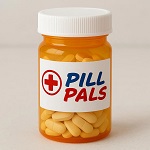 Our Pill Pass® Drug List is only $6.99 or less and Shipping is FREE!
Our Pill Pass® Drug List is only $6.99 or less and Shipping is FREE!


